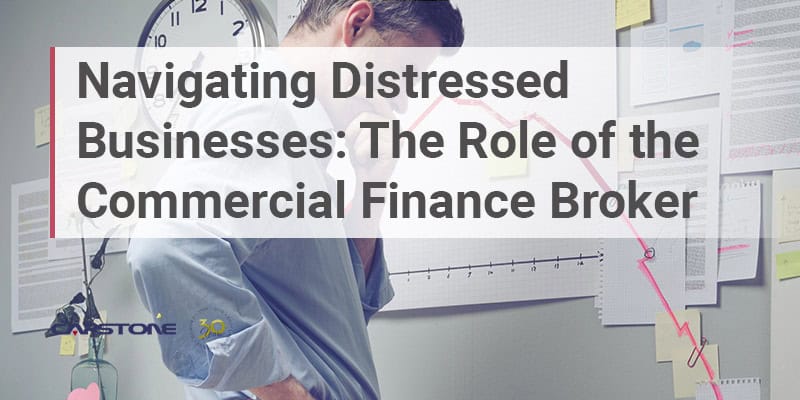We have been facing an unprecedented time during 2020 with COVID-19 ravaging our communities. Governors across the United States have taken steps, which we once never imagined including ordering business owners to close their doors. This massive closedown was in response to states losing lives, hospitals filling up, and the virus spreading at rates one could only be shocked at hearing about.
Unfortunately, while there have been massive strides in combating the virus including some therapeutics and the recent announcement of an emergency use authorization for a vaccine, we still have a long way to go before our businesses get back to “normal” operations. During this time, we have heard about more businesses than ever before filing for bankruptcy protection, and if the prognostications are accurate, we can expect more.
Borrowing is Driving Business Bankruptcies
Energy companies, travel and tourism businesses, and retail businesses which were on the edge were toppled during the early months of the pandemic. There were very few industries which were not impacted by lack of sales, inability to continue operating with fewer people being allowed to congregate indoors, and naturally, fewer people traveling for business or pleasure. According to Bloomberg News, thousands of businesses filed for bankruptcy protection, while thousands more shuttered their doors for good. However, this may not capture the full impact of the COVID-19 pandemic on bankruptcy filings for business.
The International Monetary Fund (IMF) has indicated they anticipate seeing the trend of business bankruptcies to continue ticking up over the next several months, and perhaps well into the third quarter of 2021. In large part, they believe this trend will be driven largely by debt, and not as a result of any restrictions which are placed on businesses, though there are currently significant restrictions in place, and more may be headed our way.
The IMF believes this trend is a result of businesses who were forced to borrow money to see their way through the initial lockdowns. However, for many of these businesses, getting the doors open is only part of the problem. Customer confidence walking through the doors of a retail outlet means depressed sales. Lack of confidence in being safe from the virus will continue to ravage many businesses including, and perhaps most notable, the hospitality industry.
Some of the sectors which have seen notable bankruptcies recently include:
- Retailers such as JC Penney, Lord & Taylor, Neiman Marcus and Brook Brothers are the most notable bankruptcy protection filers this year. Many smaller retailers have also filed for protection. Many other clothing retailers are still facing pressure and may be forced to file bankruptcy if holiday sales figures do not rescue them from disaster.
- Energy prices have taken a beating and while it is likely some of the larger companies will be able to ride out the decrease in sales and lower prices there is a high probability some regional energy companies, particularly those who have been forced to work with smaller profit margins may have to consider bankruptcy and close their doors for good.
- In the car rental sector, another notable name was HertzCorporation. The company also owns other rental car brands including Dollar and Thrifty. In May, they filed for Chapter 11 protection and most recently, they changed CEOs for the fourth time in six years.
- Another sector which has been ravaged by closedowns is personal gyms and training facilities. 24 Hour Fitness and Gold Gym have both filed for Chapter 11 protection and neither is expected to be able to rebound from the shutdown.
- Restaurants have been hit particularly hard by COVID-19 restrictions. CEC Entertainment (Chuck E Cheese), California Pizza Kitchen, Sizzler USA, Ruby Tuesday, Friendly’s Restaurants and FoodFirst Global Holdings, the parent company of restaurant chains Bravo Cucina Italiano and Brio Tuscan Grille all have filed for protection and in some cases, have committed to closing all or some of their remaining locations.
Red Flags for Getting Back to Business
Slower holiday sales are anticipated this year for a number of reasons. Currently, many states are actively encouraging people to not open up their homes to people outside, even family members to help stop the spread of COVID-19. Additionally, many are uncertain about how long they will have to wait before they return to full employment, or whether they will have a job come January of 2021. Uncertainty at how much government assistance is available, and other factors will likely continue to slow consumer spending.
Black Friday sales and other holiday sales often serve as a warning signal for the economy. In-store sales dropped an unheard-of 52 percent while online sales increased 22 percent. This may indicate more consumers started shopping earlier or may be saving money and buying less. If this holds true, we could see unprecedented business closures post-holiday season as businesses begin to evaluate their financial outlook for 2021 and make decisions about where their focus should be.
Getting Back to Business in 2021
Reopening the doors and being ready to meet the challenges of 2021 may only be the tip of the iceberg. Unemployment numbers, which tapered off from the high level of 14.7 percent in April of 2020 currently sits at about 6.7 percent, an amazing improvement. However, many of these numbers can be deceptive because some of the people currently unemployed may not have jobs to go back to because their businesses no longer exist. In some industries, there have been complaints from employees because they have been told that should the company reopen, they will have to reapply for their jobs versus being guaranteed a job. This is a recipe for disaster for businesses and for individuals. Keep in mind, these numbers also do not reflect employees who may currently be “furloughed” versus laid off.
For those businesses who are facing COVID-19 slowdowns, dealing with reopening, and still facing an uncertain future, going into debt could exacerbate any issues they were facing before the pandemic. One problem many businesses have faced, cash flow issues, will likely continue into early to mid-2021 whether restrictions on opening hours and capacity are lifted. Demand over the holiday season will help some businesses, but only if they can take advantage of the demand for delivery of services direct to consumer, or direct to businesses who are dealing directly with consumers. For those business owners, the need for ready access to capital to fund materials purchases will be the key to keeping their doors opening and avoiding the need to consider bankruptcy or exchanging equity in their company in return for capital to fund growth.
Financing New Growth and Demand Needs for 2021
Unfortunately, one other side effect of the pandemic is while interest rates have remained low, the credit markets still offer little relief for small and mid-sized business owners. Even with low rates, small business lending continues to be a challenge with fewer small business loans being granted. During the second quarter of 2020, small and mid-sized business lending decreased, when in reality, it was probably needed more than ever.
To avoid needing to seek protection under the bankruptcy code, many small and mid-sized businesses, particularly those which are in already underserved markets such as entertainment, staffing, and contractors will need customized solutions to their cash flow problems. At Capstone, we offer that flexibility. We can help your small to mid-sized business find a financing solution that helps you bridge the cash flow gap between now and the vaccine being more widely distributed allowing businesses to return to normal operations. Contact us today and let us help you find a solution that works for your business so you have the capital you need to survive through these uncertain economic times.




